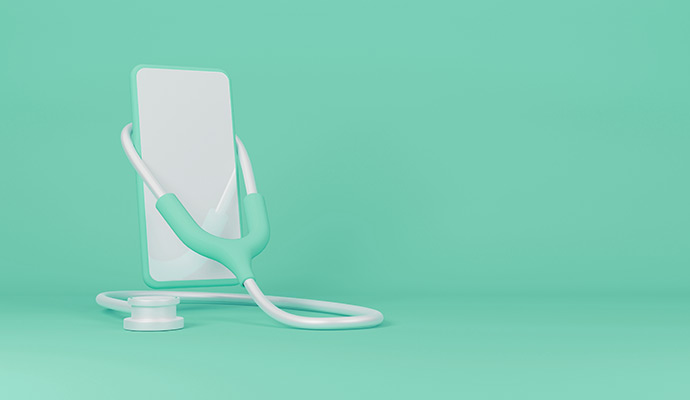Primary Care Leaders Want Clearer Telehealth Triage Guidelines Post-PHE
Virtual interviews with 25 primary care practice leaders revealed a need for solidified guidelines surrounding telehealth visit triage following the public health emergency.

Source: Getty Images
- Interviews with primary care practice leaders in Florida and New York revealed numerous challenges to telehealth implementation, including a need for more explicit telehealth visit triage guidelines following the COVID-19 public health emergency.
A new study published in the Annals of Family Medicine sought to provide insights into PCPs' experiences and perspectives regarding telehealth implementation and its evolution since March 2020. Conducted by researchers at the Icahn School of Medicine at Mount Sinai in New York City, the study reports the results of virtual interviews with primary care practice leaders from two health systems in New York and Florida.
The questions were guided by three frameworks related to health IT evaluation, access to care, and the health IT life cycle.
The researchers interviewed 25 leaders representing 87 primary care practices. Thirteen respondents said their practices had telehealth capabilities before the pandemic, but only a "few were practicing telemedicine at a meaningful volume," the study noted.
From the interviews, researchers identified four themes relating to telehealth implementation.
First, the ease of telehealth adoption depended on the prior experiences of both patients and physicians with virtual health platforms. Practices that had established telehealth programs found it easier to adapt to the new normal, displaying an advantage in scheduling telehealth visits. On the other hand, practices without prior telehealth experience found scheduling overwhelming amid growing demand. Practices also identified a need for patient training on portal use.
Second, telehealth regulations varied across states, impacting roll-out processes differently. Though regulations governing telehealth eased during the pandemic, the differing rules at the state level made implementation a significant challenge. For example, Florida's emergency order limited controlled substance prescribing only to preexisting patients throwing a "monkey wrench" into telehealth processes, according to one respondent.
Third, telehealth visit-related triage rules were unclear. Respondents agreed that not all visit types are appropriate for telehealth, but triage decision-making was left to individual practices, leading to a patchwork of approaches. One respondent said there were "wasted appointments" for patients that needed to be addressed in person. In addition, unclear triage rules increased the risk of patient safety issues.
And finally, there are positive and negative impacts of telehealth. Telehealth provided several benefits, including easing access to healthcare and closing care gaps, but it also resulted in clinicians working outside regular office hours.
"Whereas unique benefits were acknowledged, experiences differed on the basis of state regulations and learning curves for de novo programs," the study authors concluded.
Further, practice leaders noted that clarification on telehealth visit triage guidelines and telehealth-specific staffing and scheduling protocols are necessary following the public health emergency.
The study adds to research surrounding telehealth use within the primary care arena in the US.
Last month, a report noted that more PCPs in the United States believe telehealth allowed them to effectively assess mental and behavioral health needs than their counterparts abroad.
The report details findings from the 2022 Commonwealth Fund International Health Policy Survey of Primary Care Physicians conducted in 10 high-income countries from February through September 2022.
About 75 percent of US-based PCPs reported that telehealth allowed them to assess the mental and behavioral health needs of their patients to "a great extent" or "to some extent," higher than the proportion of physicians in Canada (72 percent), Australia (72 percent), the UK (72 percent), the Netherlands (69 percent), and New Zealand (64 percent), who said the same.
Additionally, 72 percent of PCPs in the US stated that telehealth implementation was easy. But this figure was lower than the proportion of physicians in the UK, Canada, Australia, New Zealand, and the Netherlands who said implementation was easy.
